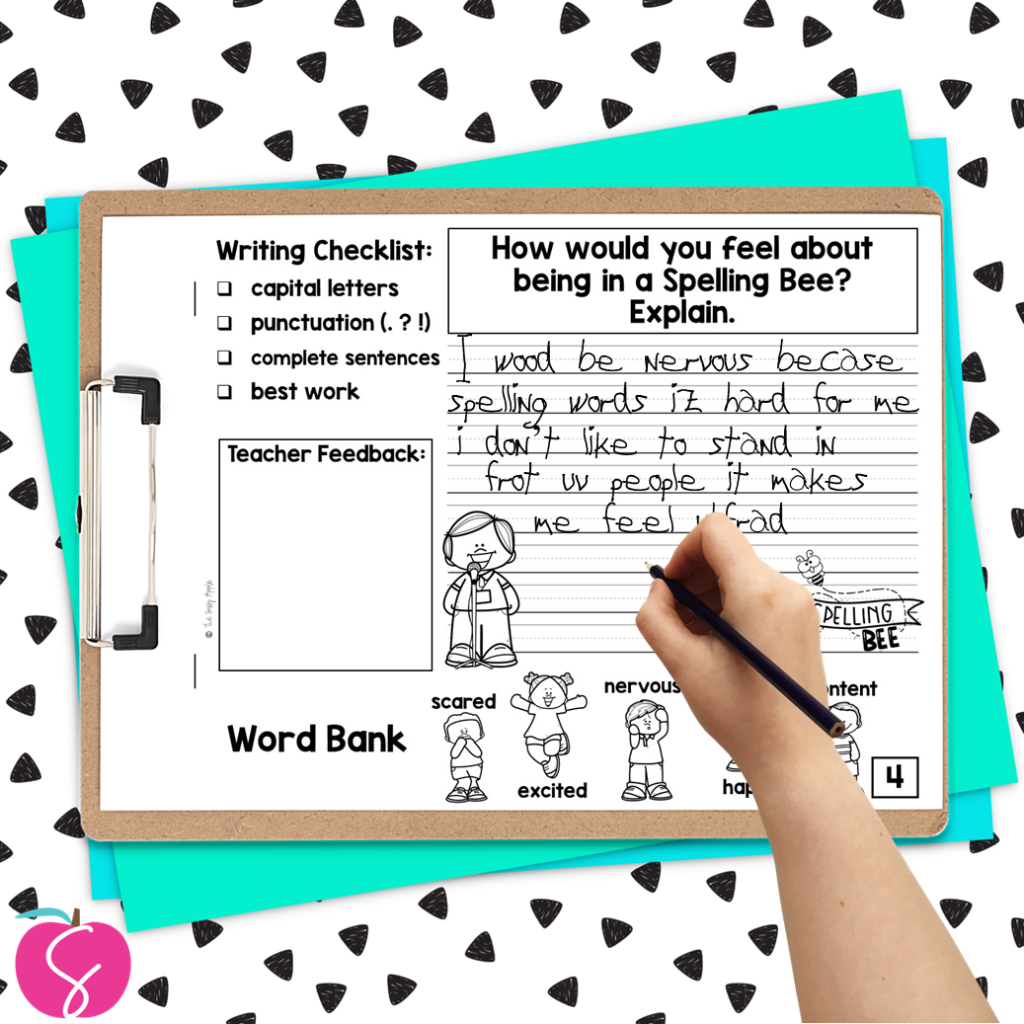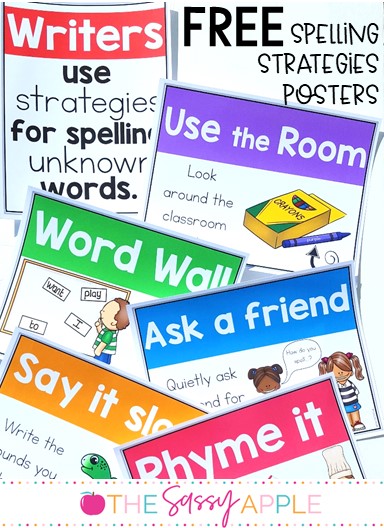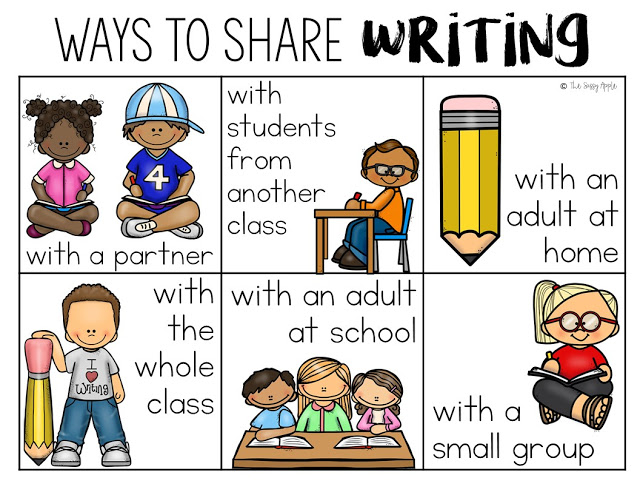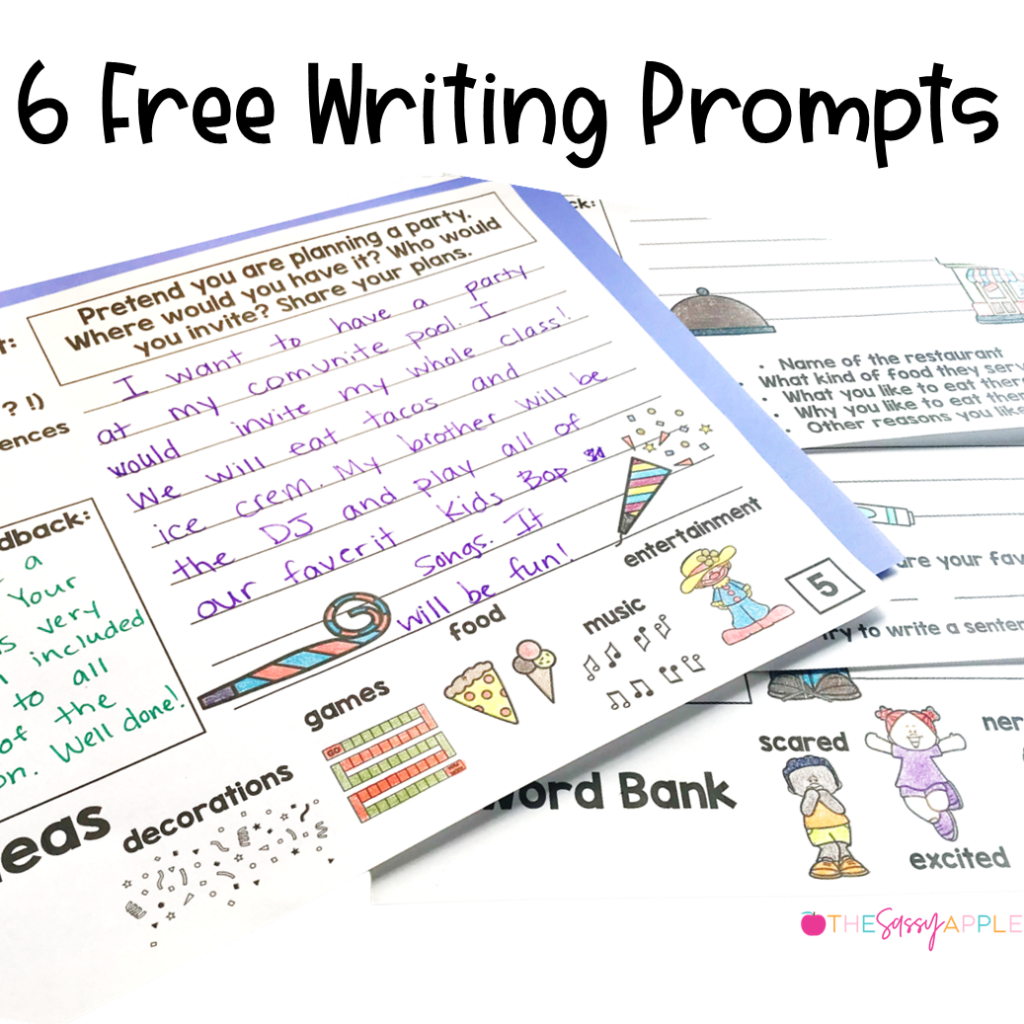Are you finding that your students’ daily prompt writing is becoming tedious and monotonous? As teachers, our goal is to keep learning exciting for our students so they can fully achieve their academic potential. Fortunately, by taking a few simple steps to switch things up in the classroom, we can re-ignite student enthusiasm toward writing prompts as an exciting outlet for self-expression and reflection. In this blog post, I will provide four surefire tips to get your class of eager learners talking about their writing again!
Allow for Choice
Letting students have autonomy over what they write about will help keep them motivated. Obviously, this isn’t always an option. But, with daily writing it can be! In each of these daily writing prompts, there are 19 unique writing prompts plus a “create your own”. This provides so many choices each month for students to choose from!

Provide helpful tools
What should students do when they feel stuck? What do they do when they are “done”? Do they have access to the materials they need to encourage them to keep going? Ironing out your writing routines and procedures is so important in setting your students up for success.
One thing I noticed with my students was that they would get stuck on spelling a word. This would abruptly stop their train of thought and it was difficult to get back on track. I knew I had to come up with a solution.

By introducing these strategies and having the posters in an easy-to-reference place, my students could be more independent when it came to sounding out tricky words during writing. Grab them here for free.
“What a great lesson this was! Your posters really helped my students to learn the many ways they can help themselves when writing. Teaching first grade, all I hear during writing is, “How do you spell..” It can get exhausting constantly saying, “Just sound it out”. Great options for kids to use, and remind them to try 3, before coming to me!” – 1st grade teacher
Read more about establishing your writing ideals during your first 3 lessons.
Shared Writing
Shared writing is a collaborative approach to literacy instruction, where teachers and students work together to create an original piece of writing. Shared writing focuses on the process of creating a text, such as brainstorming ideas, drafting, editing, and revising. During shared writing activities, teachers model the strategies for composing effective written texts and provide direct instruction about language conventions such as grammar, spelling, and punctuation. Through this type of instruction, students learn how to communicate effectively through written language.
Teaching writing…..has ALWAYS been a struggle of mine. Not to brag, but I’m a decent writer and I have always enjoyed writing. So, it’s been hard for me to figure out how to support my writers who don’t like to write. Identifying your students’ strengths and weaknesses in writing isn’t as clear-cut as it is in math. But, here are some common struggles:
- generating ideas
- transitions
- writing stamina
- using conventions
- vocabulary
- encoding (sounding out words)
Many students need to see the writing process in action. This means modeling each step and sharing the thought process. Take some time to identify what your students are struggling with most and incorporate it into a shared writing lesson. Keep it short and use one of the writing prompts. This will help students feel more inspired with their writing.
Include Opportunities to Share
Opportunities to share writing often will help make it more meaningful. It also provides an opportunity for helpful feedback and encouragement from someone besides the classroom teacher. When students are given the opportunity to showcase their writing publicly rather than just handing it in privately, they can build meaningful connections outside the classroom. I love taking our writing journals to meet with our book buddy class. It’s so helpful for younger students to share their work with older students who they look up to.

Ultimately, allowing students to share their writing not only keeps them motivated but also gives them a sense of ownership over their own education. By giving them greater control over how they present themselves and interact with others through their written works, we can create more engaged students who will go on to become successful writers both inside and outside of the classroom setting.
I hope you have found these ideas for keeping students motivated with daily journal writing helpful. In order to build writers, they need to have the opportunity to write every day. Writing in a daily journal provides the consistent practice students need.
Ready to get started with daily writing prompts? Grab these free writing prompts (digital + printable!).



